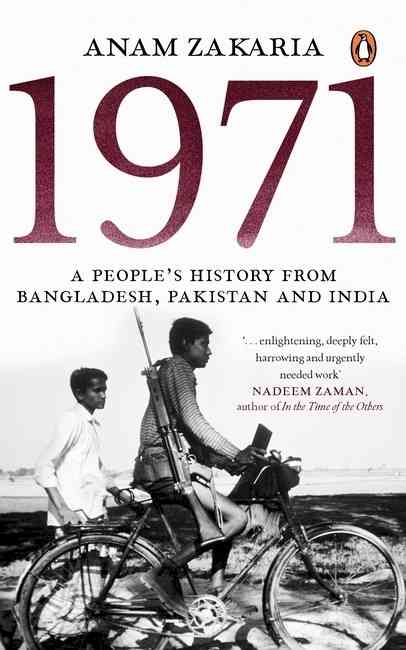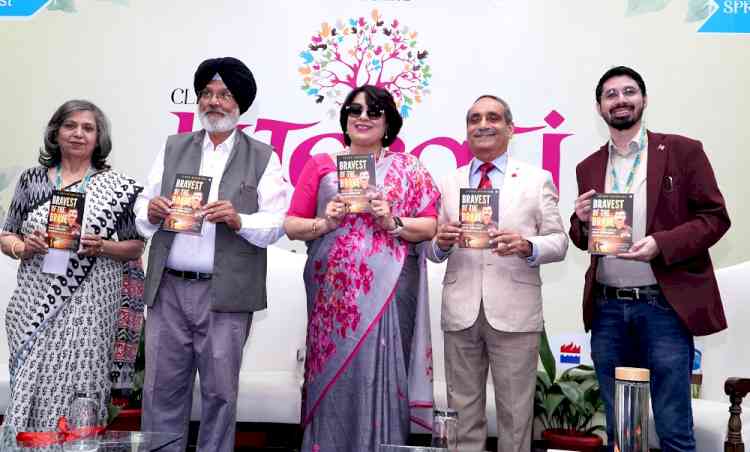'Claiming victory in 1965 in Pakistan softens the blow of 1971' (Book Excerpt)
Pakistan defines itself as a defensive state, a country that only acts in the interest of protecting its citizens from enemy forces

By Anam Zakaria
"We fought two wars with India. They won one and we won the other," my mother explained. "We had our victory in 1965, but in 1971 we lost badly ... because of that we had to give away part of our country. East Pakistan became Bangladesh." That is my earliest memory of learning that Bangladesh too was once part of Pakistan.
I was a young child, probably in grade 4 or 5, curious about Pakistan's history. My mother, like other Pakistanis, learnt historical facts (or fiction) through the usual sources: classrooms, family and media reports. In the popular imagination, Pakistan stood victorious in 1965, defending the Indian attack on Lahore. Its own policies in Kashmir, the story of Operation Gibraltar prior to the war are conveniently obliterated.
Pakistan defines itself as a defensive state, a country that only acts in the interest of protecting its citizens from enemy forces. In 1965, Pakistanis are told, the Pakistan Army bravely defended the country against India's aggression. India too claims to have stood triumphant in 1965, convincing its citizens that it had the upper hand in the war.
Somewhere in the midst of these grand tales of victory and defeat, the ceasefire agreement, which rendered victory inconclusive on both sides, has long been forgotten.
Today, India and Pakistan continue to commemorate the war on both sides of the border in September, claiming success over the other. Significant monetary investments are made to show the enemy on the other side that they are indeed triumphant, not only in 1965 but in contemporary affairs too.
Claiming victory in 1965 in Pakistan, however, also serves another need. It softens the blow of 1971, a war that is viewed as Pakistan's most humiliating defeat by many Pakistanis themselves. Compared to Partition, which led to the creation of Pakistan, the country's break-up in 1971 and the creation of Bangladesh is seldom spoken about.
Growing up, East Pakistan was rarely discussed and the creation of Bangladesh always seemed sudden and illegitimate. The years between 1947 and 1971 received little focus, as was the case with the increasing estrangement of the two wings (east and west) and the brewing resentment among the Bengali population.
It seemed as if Bangladesh erupted out of nowhere at the end of 1971, yet again because of India's aggressive policies. I was told more than once, in and outside of classrooms, that India could never truly stomach the creation of Pakistan.
From the beginning, it had tried to destabilise the country, finding fertile ground in East Pakistan, which was dominated by "Hindu culture". My teachers and the others I interacted with failed to mention that East Pakistan had a Muslim majority population. In fact, I grew up believing that it had a Hindu majority, making separation almost necessary.
After all, isn't that what the two-nation theory - which serves as Pakistan's raison d'etre today - had proposed? That Hindus and Muslims were two separate nations, incapable of coexisting? How could East and West Pakistan stay united, particularly when they were divided by thousands of miles of hostile Indian territory? Engineered by India and its Hindu agents in the East Wing, the break was sudden but inevitable.
With this rationalisation,this part of history was neatly folded and tucked away. Bangladesh received little attention from my end, as I assume it does for the majority in the younger generations in Pakistan.
Chapter 3 of the Grade 9 and 10 Textbook of Pakistan Studies, which is endorsed by the country's Federal Textbook Board, has a section titled 'The Fall of East Pakistan'. It details the reasons for the growing resentment amongst Bengalis, with India's role in the dismemberment of East Pakistan allotted the greatest space. It is stated that:
The Indian leadership in general did not agree with the idea of creating a separate homeland for the Muslims. When Pakistan was created to their entire displeasure, they started working on the agenda of dismembering it without delay. East Pakistan's soil proved very fertile for them for several reasons.
Firstly, that the province had a very big Hindu population, which, unlike West Pakistan Hindus, had deep pro-India sympathies. Secondly, that these Hindus were economically well-off and well educated. In many schools, colleges and universities Hindu teachers outnumbered Muslim teachers. These institutions with the passage of time turned into nurseries for breeding anti-Pakistan and secessionist intelligentsia. These intellectuals played a decisive role in dismembering Pakistan. East Pakistani masses, which felt deprived and oppressed by West Pakistan, fell an easy prey to the secessionists.
The book is taught across public and private schools in Islamabad as part of the compulsory Pakistan Studies course. The book's preface mentions that "the textbook has been written with a view to provide orientation on the Two-Nation Theory".
It is perhaps no wonder then that the authors have found it imperative to highlight that East Pakistan held a "very big Hindu population". Since Hindus are perceived as the 'other' nation, a wing with a significant Hindu population was thus destined for separation. By presenting it as a given, it would prevent children from questioning Pakistan's own role in 1971 and the years leading up to the separation.
The Bengali Hindus are further equated with having pro-India sympathies in the passage; in other words, they were traitors who were loyal to Pakistan's nemesis. With religious nationalism heightened, to be a patriotic Pakistani has increasingly become synonymous with being Muslim, anti-Hindu and anti-India. Anyone who is not Muslim is also somehow not Pakistani enough.
Therefore, when anti-American sentiment is heightened, it is the Christians in Pakistan who become vulnerable to attacks. And when anti-India sentiment is exacerbated, it is the Hindus in Pakistan, commonly referred to as Indians, who are targeted. It is important to understand this context to fully grasp how damaging the above excerpt is.
Firstly, by accentuating the existence of the Hindu population, with little focus on the number of Muslims in the region, children learn to 'otherise' East Pakistan; to treat it as alien, as a part that was never truly Pakistan.
And then to project all Bengali Hindus as being pro-India is to swiftly cast away East Pakistanis as treacherous traitors, working behind Pakistan's back and in the interests of its enemy. It is no wonder that the popular perception in the country is that the break-up of East and West Pakistan happened because of India. Pakistan's own role is minimised.
(Excerpted from '1971 - A People's History from Bangladesh, Pakistan and India' with the permission of the publisher, Penguin.)


 IANS
IANS 







